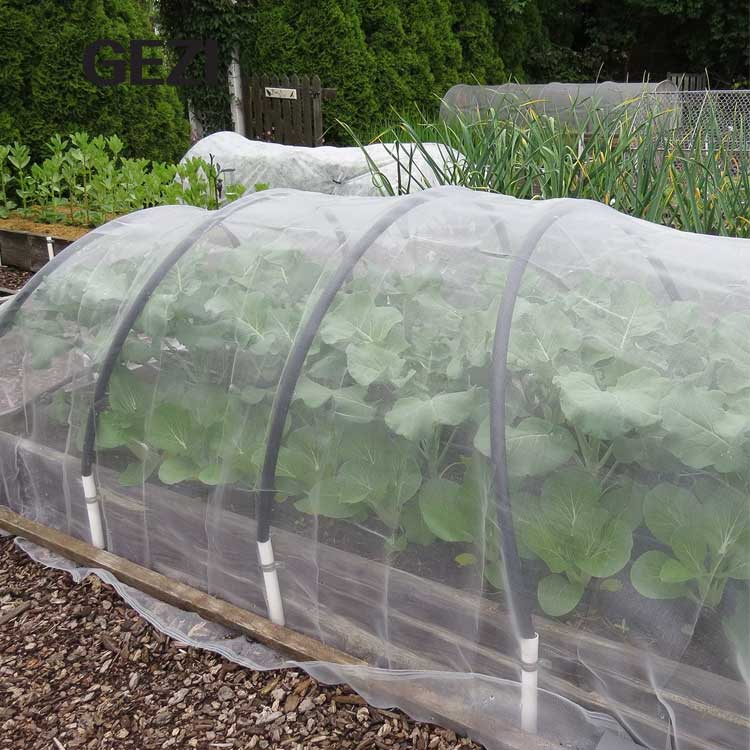Sometimes the best way to protect your edible crops from pests is to physically block them out using netting. Nets are a great way to keep out marauding chooks, birds, cabbage white butterflies and even fruit flies. Although you'll need fine netting for fruit flies.
Insect Netting raised beds
Drill 10mm holes into the wood on either side of the raised bed, at equal intervals. Then insert bent 8mm wide rods that can arch over and connect both sides. This technique creates a support structure for the netting and makes it easier to slip the rods on and off as crops mature or seasons change.

Anti Insect Netting in-ground beds
Create a frame using stiff poly-pipe or flexible conduit. You want something flexible enough to bend, but strong enough that it can stand up by itself. Sophie uses salvaged offcuts from the neighbours.
Choose tall hardwood stakes that will fit inside your piping. Hammer the stakes into the bed at matching intervals on either side, allowing a good amount to protrude so the pipe will slot over.
Cut the pipe into even lengths with a hacksaw or a sharp knife. There's no rule about how long they should be but, the longer the pipes, the taller the structure. Keep in mind how high you're expecting your plants to grow at maturity.
Choose insect exclusion netting large enough to cover the area. As a general rule, wildlife friendly netting has holes that are less than 5mm and you won’t be able to fit your finger through.
Cover the structure with the net and secure it in place with clamps or bulldog clips keeping it taught to prevent birds or wildlife from getting caught. To secure the ends of the net, bundle the excess into a ponytail then tie and peg it down.
This method is adaptable and can be scaled up to fit any size bed. At different times of the year, you can swap the height of the hoops or change the cover material for shade cloth or plastic sheeting. Remember, if your crops are insect pollinated, the good bugs will have a hard time getting into your fortress, so when you see your plants flowering, pull the netting back to let the good bugs in.



